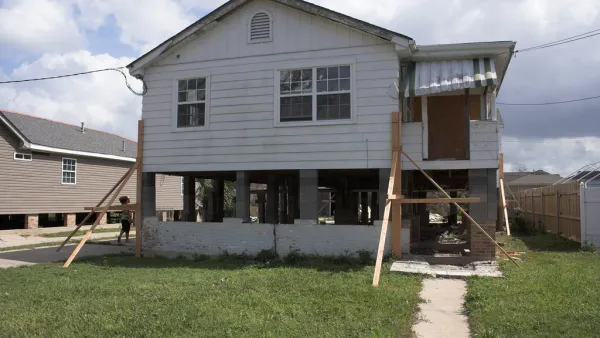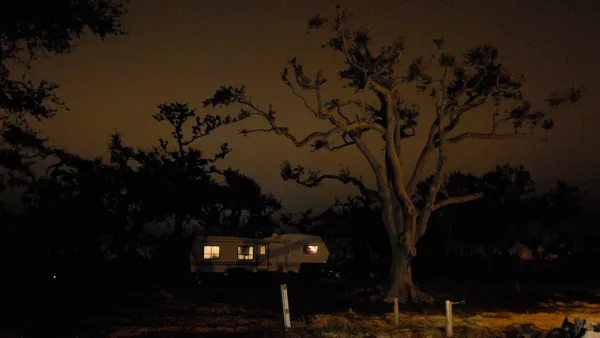Housing -- or the lack of it -- remains a major issue in post-Katrina New Orleans.
"But three years after natural disaster stripped Beard and her sons of their house in New Orleans, she is still not okay. Unable to find a place she can afford after being evicted this summer from Renaissance Village, the largest FEMA trailer park in the country, the Beard family is contemplating a move next month into a homeless shelter."
"Like others in the room, also evacuees from a poor and heavily African American neighborhood in New Orleans, Lena had received a trailer for herself and her two sons. The trailer was approximately 8 foot by 32 foot, with two sectioned-off ends that served as bedrooms. Even if she was watching TV in her room with the flimsy door shut, everyone in the trailer could hear what the other was doing."
"In the years after the storm, moving displaced low-income families back to New Orleans has become less and less realistic. Yes, 92 percent of hotels in New Orleans were open by mid-2007, but by June 2008, 40 percent of public schools remained closed. The number of public buses up and running is still nowhere near pre-Katrina levels."
"In the fall of 2007 the number of active trailers still numbered more than 50,000. By February 2008, when CDC tests confirmed high levels of formaldehyde in FEMA trailers across Louisiana and Mississippi, FEMA began an aggressive push to shut down its trailer parks and "relocate families into safer and more permanent housing." In the first quarter of 2008, FEMA displaced over 10,000 trailer residents. But even after the formaldehyde scandal had broken, the cramped and toxic trailers were the only security most residents had. "This is home, and I ain't going to move into any slum just because FEMA tell me I have to," Beard lamented to me in early 2008, referring to the apartments FEMA had on its lists of available long-term rentals."
FULL STORY: Three Years After Hurricane Katrina, Homelessness Looms

Analysis: Cybertruck Fatality Rate Far Exceeds That of Ford Pinto
The Tesla Cybertruck was recalled seven times last year.

National Parks Layoffs Will Cause Communities to Lose Billions
Thousands of essential park workers were laid off this week, just before the busy spring break season.

Retro-silient?: America’s First “Eco-burb,” The Woodlands Turns 50
A master-planned community north of Houston offers lessons on green infrastructure and resilient design, but falls short of its founder’s lofty affordability and walkability goals.

Test News Post 1
This is a summary

Analysis: Cybertruck Fatality Rate Far Exceeds That of Ford Pinto
The Tesla Cybertruck was recalled seven times last year.

Test News Headline 46
Test for the image on the front page.
Urban Design for Planners 1: Software Tools
This six-course series explores essential urban design concepts using open source software and equips planners with the tools they need to participate fully in the urban design process.
Planning for Universal Design
Learn the tools for implementing Universal Design in planning regulations.
EMC Planning Group, Inc.
Planetizen
Planetizen
Mpact (formerly Rail~Volution)
Great Falls Development Authority, Inc.
HUDs Office of Policy Development and Research
NYU Wagner Graduate School of Public Service




























